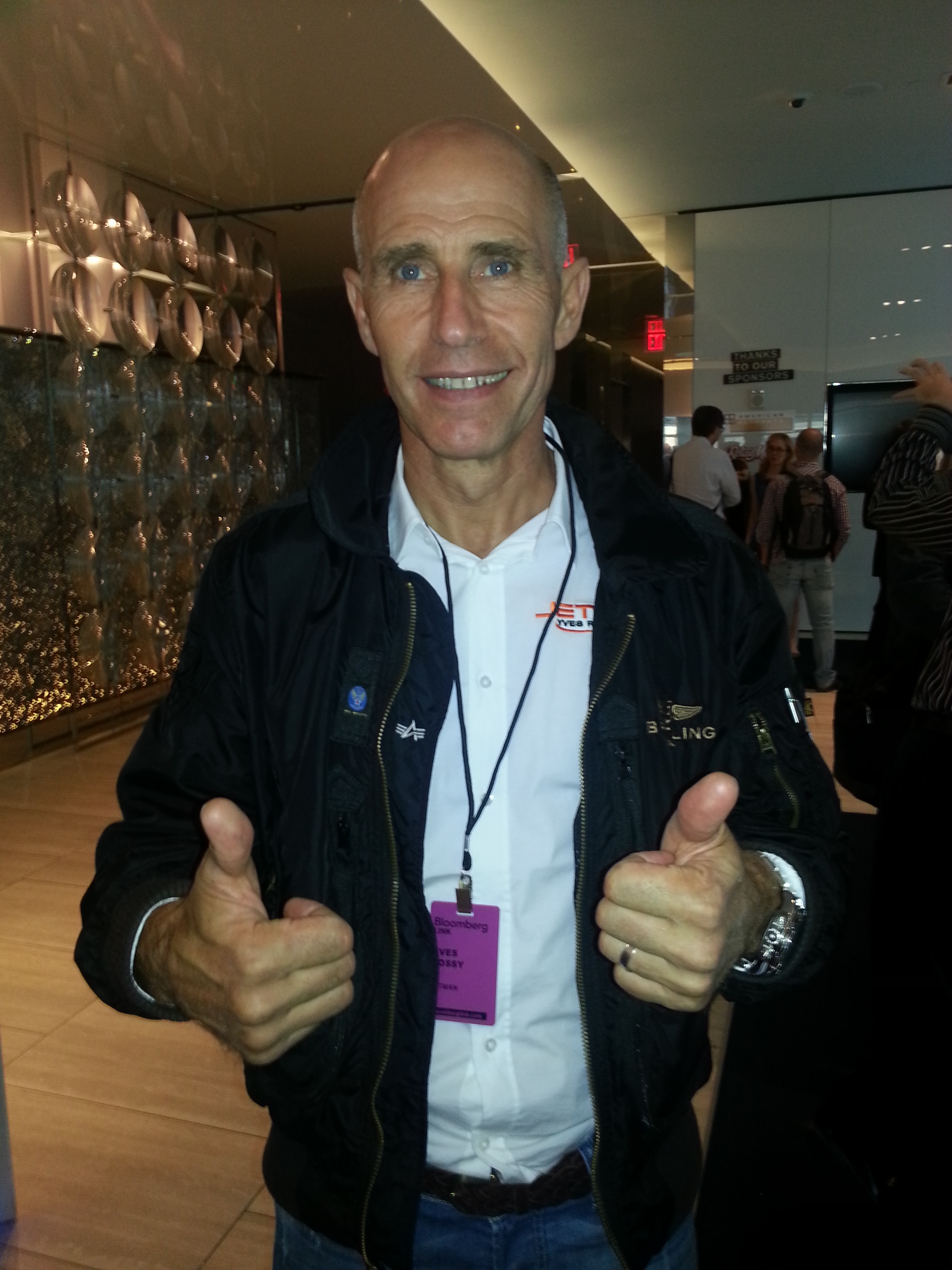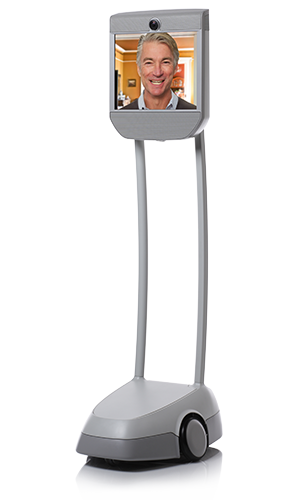The crossroads of technology is coming to a convergence. Call that point smart software meets useful hardware.
In Bloomberg Link Next Big Thing Summit's afternoon panel, Show & Tell: Art Meets Technology, Bloomberg News Editor-as-Large Cory Johnson moderated the panel that featured Juan Montes, CTO of the Museum of Modern Art, Adobe's Michael Gough, VP of Experience Design, Eyebeam, and Solidoodle.
The crux of the talk centered on how technology is dramatically shifting the paradigm from the professional to the amateur. The speakers discussed how Instagram effect has mashed art and technology in a very simple way -- "Filters," as Cory Johnson noted -- that no one had thought of before. That basic design innovation also shifted the competitive landscape that drives competition and fuels further innovation.
Two products jumped out at the Summit. One semi-old, the other new.
Beam is a mobile, remote video-conferencing platform, a newcomer born out of robotics of Willow Garage. The other is a high profile, high-flying winged-man that sparked attention by jetting over the Swiss Alps a few years ago. In the latter, Cory Johnson interviewed Yves Rossy, CEO and the "pilot" of Jetman in a one-on-one discussion, Adventures in Aviation.
Catching up with Jetman
In meeting Yves Rossy of Jetman, this author saw a seasoned, middle-aged man dripping with experience, but filled with a twinkle in his eye. Under his warm, gregarious persona is a man filled with the passion to fly.
"My past experience is mainly as a professional aviator," Yves Rossy told me. "First, as a fighter pilot flying Mirage 3 jets and then as a commercial captain flying 747's and various airbus passenger aircraft for Swiss Air."
It was during Rossy's early 30's that he discovered free-fall skydiving.
"I loved the feeling of free-fall. But the vector was always just down," he said. "My challenge was to change the vector to maintain straight, level flight, then climb and perfect the performance of my Jetwing to achieve the total freedom of flight. Now I can climb, do standard aerobatics. I can loop. I can roll. And I can fly in formation with Jets and other aircraft." Pretty amazing. "I feel the freedom of the third dimension using just my body to pitch, steer, ascend or descend as simple as a boy playing with an aircraft in the playground."

Yves Rossy at Bloomberg Link Next Big Thing Summit (credit: James Grundvig)
On taking the Jetwing idea to commercialization.
"The next step of progress will focus on more powerful engines. Double the power I have now with the focus to climb absolutely vertical and see how far I can improve my flight performance with this extra power. I am also exploring the possibilities to takeoff from the ground. First, with a catapult from a cliff, and then we see where we can go from there. I am instructing a second Jetman -- my first student with 13,000 jumps as a skydiver and multiple as world champion. When we achieve that, we will try flying in formation. And why not just try for a Jetman squadron!"
Yves Rossy has worked on the Jetman project for 18 years with, "15 versions of the Jetwing to get to this point."
The evolution of the Jetwing:
- Small fixed wing
- Larger Inflatable wing
- Larger rigid wing with folding tips
- With 2 engines to a delta wing with four engines
All of that culminated into, "improved wing with aerodynamics and four engines to achieve what I have today," he said, concluding, "Each of my current wings cost $125,000 plus. All these years and I dread to think how many millions of euros, manhours and number of friends and people participating, helping and assisting to make the project possible. I thank them all and I wouldn't be here without them."
What is 'Beam?'
Experiencing Beam demoed live, I connected with the PR rep from Suitabletech, Inc., the company that invented Beam.
Sitting in the press area at the Apella Theater on the east side of Manhattan, I looked up and saw this tall, slender, mobile robot zoom over to me, very Jetson-like. But it was a robot without arms or legs. Beam's twin poles rise up from what looks like a hose-less vacuum cleaner with big wheels on the bottom and a beautiful tablet interface on top. And like a laptop, it has a large camera lens that can zoom in and out.

Beam Remote Presence Product (credit: Suitabletech, Inc.)
What does that do? It allows for a seamless communication between the person on screen in her office and another sitting at a different location. The best part of Beam is its easy navigation. Beam's joystick is actually the page arrows on the laptop keyboard. So moving Beam requires little training, is intuitive, and works off of WiFi signals on both ends of the live interface conversation -- or what Scott Hassan, CEO and President of Suitabletech calls "remote presence."
Better than Skype, more personal with better video quality than a Web-stream, Beam is durable on top of being easy to use. In test-driving the 100-lb Beam, I drove it through Suitabletech's Palo Alto, CA, office, 3,000 miles away, down a hall to the supply room in the back where a fleet of Beams are fine-tuned and tested, and have a brief conversation with a technician.
Scott Hassan, together with his PR rep on Beam, discussed his past as founder of Willow Garage, eGroups (now Yahoo! Groups), and as the "key software architect and developer of Google, Alexa Internet, and Stanford University Digital Library," his alma mater.
Personable, warm, with realistic expectations that Beam will catch on to vastly improve meetings for enterprises and their vendors, Hassan explained that Beam was born out of frustration. "In 2011, we were developing autonomous robotics, automated cars, solar-power autonomous boats, and then switched to personal robotics," he said.
"We called out first prototype PR2, for Personal Robot 2," he said. "In order to get traction, I had to look outside the Bay Area for talent. I hired an onshore engineer in Indiana to work for us. But between the phone, emails and Skype, no one knew who the engineer was... until he decided to do something about it."
Building a single, 450-lb PR2 robot cost "$400,000, with a huge team of sixty engineers. But it was that one electrical engineer from Indiana, who had to talk over the phone, who knew no one and know one of knew him. Well, he cobbled together a pre-Beam running on Skype... and he went from the least known employee to the most known," Hassan explained. "He had a presence. A distraction became a pivot... We stopped making PR2s. We will ship the last one in October, after making 60 of them."
Mr. Hassan never really saw mass-producing PR2. But Beam is a different matter: "At $16,000 with an annual maintenance fee of $2,400, which includes support, software upgrades, and customer service," Beam seems affordable for the enterprise.
Today, IBM, HP, Microsoft, and Intel use Beam with their division heads and their clients and vendors around the world, whether in the intimate setting of the office or in the conference room with many people live on many Beams."
In his view, Beam is a personal, natural way to communicate. It also doesn't record as a matter of policy, so it doesn't leave a digital footprint. So if people argue on Beam, it's the same as they do it in person. When it's over, nothing is recorded that can be used against any person.
"It's bi-directional. If I can see you, you can see me... If one user disconnects one side of Beam, then the conversation turns off on both sides. The idea is to make people feel comfortable," he said.
Now Scott Hassan and his team are building Beam for outdoor use.
"Beam me up, Scotty!" Not quite. But Beam is taking us a step into the Jetson Age, pre Star Trek.